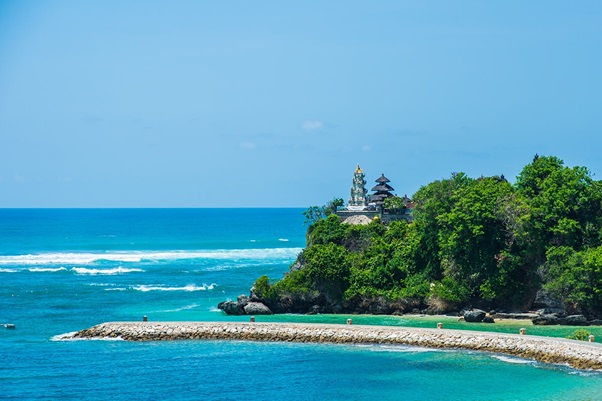Bali Geography

The island of Bali is located 3.2 km (2 mi) in the west of Java. It is nearly 8 degrees south of the equator. Java and Bali are divided from the Bali Strait. East into the west, the island is around 153 km (95 mi) wide and crosses about 112 km (69 mi) north to south, making the land area 5,632 km².
The central hills of Bali incorporate many peaks. The best is Mount Agung (3,142 m), called the “mommy mountain”, which is an active volcano. Mountains vary from centre to the side, together with Mount Agung that is the easternmost peak. The volcanic character of Bali has contributed to its outstanding fertility, and its mountain ranges offer the rainfall that supports the productive agriculture industry.
South of these mountains is a spacious descending area where many of the big rice crops of Bali are grown. The side of the mountains is the essential coffee producing area of the island, along with cattle, veggies, and rice and slopes more steeply into the sea. The most magnificent lake, Ayung River, flows approximately 75 km.
Coral reefs surround the island. The southern beaches tend to have white sandy shore while those in the west and the north have black sand. Bali has no waterways, even though the Ho River is navigable by small sampan boats. Black sand beaches between Pasut and Klatingdukuh are being developed for tourism; however, apart from the temple of Tanah Lot, they are not yet employed for tourism.

The city is the provincial capital, Denpasar, near the southern shore. Its population is currently approximately 491,500 (2002). The second-largest city of Bali is the old capital, Singaraja, that is located on the north coast and is home to about 100,000 people. Other significant towns include the beach hotel, Kuta, which is practically a portion of the Denpasar area. Also, Ubud, situated in the north of Denpasar, is the island’s cultural centre.
Three small islands lie to the immediate southeast, and all are administratively a part of their Klungkung regency of Bali: Nusa Penida, Nusa Lembongan, and Nusa Ceningan. All these islands are separated from Bali by the Badung Strait.
To the east, the Lombok Strait divides Bali from Lombok and marks the biogeographical division between the fauna of the Indomalayan and Australasia ecozone. The transition is referred to as the Wallace Line, named after Alfred Russel Wallace. He first proposed a transition zone between these two vast biomes. After sea levels dropped during the Pleistocene ice age, Bali shared with the Asian forests and was connected to Sumatra and Java and the mainland of Asia. However, the heavy water of the Lombok Strait continued to keep the Lesser Sunda archipelago and Lombok.
Planning to visit Bali, Indonesia, soon? Find out more about Bali and Indonesia by visiting Wonderful Indonesia.










